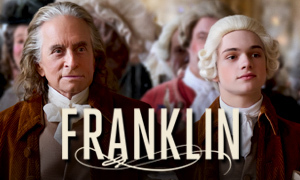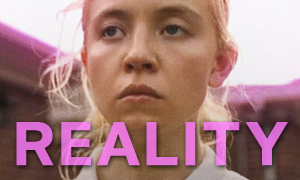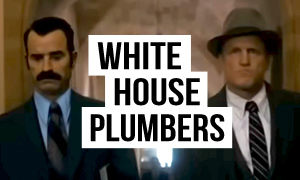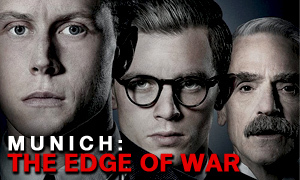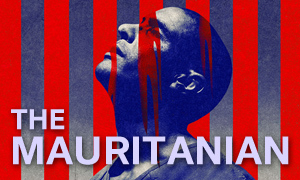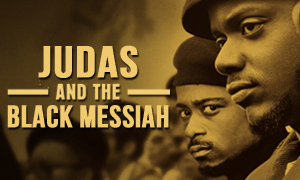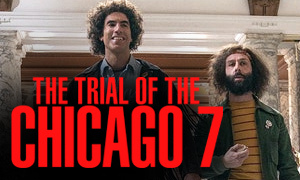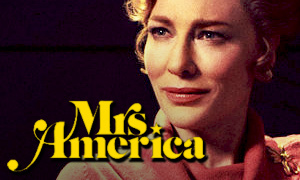Judas and the Black Messiah: History vs. Hollywood
Daniel Kaluuya
Born: February 24, 1989
Birthplace:
London, England, UK
Fred Hampton
Born: August 30, 1948
Birthplace: Maywood, Illinois, USA
Death: December 4, 1969, Chicago, Illinois, USA (shot by police during raid)
LaKeith Stanfield
Born: August 12, 1991
Birthplace:
San Bernardino, California, USA
William O'Neal
Born: April 9, 1949
Birthplace: Chicago, Illinois, USA
Death: January 15, 1990, Chicago, Illinois, USA (suicide)
Dominique Fishback
Born: March 22, 1991
Birthplace:
New York City, New York, USA
Deborah Johnson
Birthplace: USA
Martin Sheen
Born: August 3, 1940
Birthplace:
Dayton, Ohio, USA
J. Edgar Hoover
Born: January 1, 1895
Birthplace: Washington, D.C.
Death: May 2, 1972, Washington, D.C. (heart attack)
Darrell Britt-Gibson
Born: May 8, 1985
Birthplace:
Silver Spring, Maryland, USA
Bobby Rush
Born: November 23, 1946
Birthplace: Albany, Georgia, USA
Algee Smith
Born: November 7, 1994
Spurgeon 'Jake' Winters
Death: November 13, 1969 (shot by police)
Nicholas Velez
Birthplace:
Queens, New York, USA
José Cha Cha Jiménez
Born: August 8, 1948
Birthplace: Caguas, Puerto Rico
Ian Duff
Ronald 'Doc' Satchel
Born: abt 1950
Death: January 2013
Was Fred Hampton chairman of the Black Panther Party?
The Judas and the Black Messiah true story confirms that at the time of Fred Hampton's death, he was the chairman of the Illinois chapter of the Black Panther Party, which by definition made him a deputy chairman of the national Black Panther Party.
What does the movie's title mean?
"Judas and the Black Messiah" is a reference to the Bible. Judas is the one who betrayed Jesus for 30 pieces of silver. Obviously, LaKeith Stanfield's character, William O'Neal, is the Judas here, as he betrays Fred Hampton (Daniel Kaluuya), the story's messiah, for essentially a $300 bonus from the FBI. The term "messiah" also refers to the fact that the FBI wanted to prevent the rise of a civil rights messiah who could galvanize crowds and potentially incite a revolution.
How did Fred Hampton become a leader in the Black Panther Party?
Hampton had excelled in school, graduating from Proviso East High School in Maywood, Illinois with academic honors, a Junior Achievement Award, and three varsity letters. He then attended Triton Junior College, majoring in pre-law in order to better understand the legal system and his rights when confronted by the police. Hampton became involved with the National Association for the Advancement of Colored People (NAACP) and became one of the organization's youth organizers, assembling a youth group that had 500 members. He fought for better neighborhood recreational facilities and that the impoverished black community of Maywood be provided with improved access to educational resources.
At this time, the Black Panther Party was growing in popularity around the country. Fred Hampton was attracted to the party's Ten-Point Program, which described their platform and the change they wanted to see. He also agreed with the party's socialist leanings. He joined the Chicago chapter in November 1968 and used his skills as a community organizer and orator to quickly ascend to a leadership position. When Stokely Carmichael and Bob Brown left the party after being targeted by the FBI, Hampton became chairman of the Illinois state chapter, the largest in the country. As the FBI's COINTELPRO operation continued to target the party's leadership, Hampton rose to prominence nationally and was in line to assume the BPP's Central Committee's Chief of Staff position. He was killed before doing so.
Was Fred Hampton a socialist?
Yes. A Judas and the Black Messiah fact-check confirms that Hampton was indeed a socialist. In one of his most well-known statements, he says that the solution to capitalism isn't black capitalism, it's socialism. The movie champions this position, and its director, Shaka King, has said he believes that Hampton and the Panthers were on the right track.
Did Fred Hampton unite Chicago street gangs by encouraging them to fight for social change instead of each other?
Yes. The Judas and the Black Messiah true story reveals that as a member of the Black Panther Party, Fred Hampton brokered a non-aggression pact between the gangs. He stressed that infighting would only keep them stuck in the same cycle of oppression. He formed a multicultural alliance called the Rainbow Coalition, which included gangs like the Young Lords (Puerto Ricans) and political groups like the Young Patriots (Southern white leftists). He also organized rallies, taught political education classes, was pivotal in establishing the BBP's Free Breakfast Program, and developed an initiative that empowered communities to monitor the police for instances of brutality.
Is Dominique Thorne's character, Judy Harmon, based on a real person?
No. In researching the Judas and the Black Messiah fact vs. fiction, we learned that Judy Harmon was created for the film to help showcase the integral part that women played in the Black Panther Party. In the movie, Harmon is a key figure in Hampton's security detail.
What dirt did the FBI have on William O'Neal to convince him to become an informant?
Similar to what is seen in the movie, William O'Neal had been arrested for impersonating a federal officer and he had been arrested for interstate car theft twice. The movie embellishes the real-life events a bit by having O'Neal use his fake FBI badge to steal a car from a customer at a bar. In real life, O'Neal was pulled over in a stolen car and told the officer he was with the FBI, presenting the phony identification to the officer. The FBI promised him that if he became an informant and infiltrated the Black Panther Party in Chicago, his felony charges would be dropped. He would also receive a monthly stipend.
Are the ages of Fred Hampton and William O'Neal represented accurately in the movie?
No. In real life, both Hampton and O'Neal were significantly younger. William O'Neal was only 17 when he became an informant for the FBI, and Fred Hampton was 21 at the time of his death. Actors LaKeith Stanfield and Daniel Kaluuya are 29 and 31, respectively.
Did William O'Neal become Fred Hampton's bodyguard?
Yes. The FBI's informant, William O'Neal, joined the Black Panthers in November 1968 and became the local chief of security. He also acted as Fred Hampton's bodyguard. It's true that he supplied the FBI with information about Fred Hampton's apartment (pictured below) prior to the raid.
Did informant William O'Neal try to sabotage Fred Hampton's mission of uniting Chicago's gangs and incorporating them into the movement?
Yes. With the help of his handlers at the FBI, William O'Neal actively tried to sabotage mergers between the Black Panther Party and local gangs, disrupting Fred Hampton's plans to unite with them under one umbrella for social change. According to plaintiffs' evidence, O'Neal encouraged the Panthers to acquire more weapons, take part in criminal activity, and escalate their use of violent tactics. He also helped the FBI to discredit the leadership of the Black Panther Party, including Fred Hampton. O'Neal assisted the FBI in their efforts to disrupt the BPP's goal of gaining the support of various white activist groups, including the Students for a Democratic Society (SDS). To help achieve this, O'Neal pushed for the distribution of various racist BPP cartoons. For his assistance, William O'Neal was given several pay raises from the FBI.
Is FBI agent Roy Mitchell based on a real person?
Yes. Jesse Plemons' character, FBI agent Roy Mitchell, is based on a real person. Mitchell had a 25-year career with the FBI and was employed until his death at age 66 in 2000. He worked on a number of high-profile cases, including the murder of three civil rights workers, which became the basis for the movie Mississippi Burning. He was instrumental in solving the River Killings and later played a pivotal role in the Hit Squad case, which led to the conviction of police Sergeant Stanley Robinson, who had been arrested for assassinating drug dealers in the early 1970s. Mitchell's most famous case was that which is focused on in the Judas and the Black Messiah movie, which found him recruiting and grooming informant William O'Neal to infiltrate the Black Panther Party in Chicago. In real life, Mitchell had as many as nine informants connected to the BPP, but O'Neal was the most significant.
Is Roy Mitchell's relationship with his informant, William O'Neal, portrayed accurately?
No. Screenwriters Kenny and Keith Lucas responded to the question by saying, "We didn’t know the nature of William O'Neal's relationship with Roy Mitchell. We got the transcript from [the 1990 PBS civil rights docuseries] Eyes on the Prize II, but you can't really trust what William O'Neal was saying. We took what he said, and made some assumptions based on other research that we've done, about the relationship between informants and their handlers." -Decider.com
The scene where William O'Neal spends time at Roy Mitchell's home is based on a comment O'Neal made about visiting Mitchell's place. However, the dialogue that unfolds there is fictional. The real O'Neal never revealed what had been discussed.
Did the Black Panther Party believe in violence?
The Black Panthers were known for being a militant political organization. They believed that due to the fact that the police had guns, they would never truly be liberated from the chains of the oppressor. They believed that arming themselves, primarily for self-defense, was the only way to guarantee true liberation. As a result, members of the Black Panther Party engaged in many fatal shootouts with police. Prominent members like Bobby Seale outright called for using violence against the police when confronted. They believed that Martin Luther King Jr.'s death was proof that advancing civil rights through nonviolence doesn't work.
Judas and the Black Messiah's director, Shaka King, wanted to emphasize that the Black Panthers were much more than a Marxist revolutionary group that dressed in black uniforms. As seen with Fred Hampton in the film, they were individuals who loved, had children, were community organizers, and possessed valuable political ideas. They were far more complex than the stereotypes often associated with them. This was demonstrated by their Free Breakfast for Children Program, the community health clinics they established, and their multicultural movement that became known as the Rainbow Coalition. However, the FBI believed that the Free Breakfast for Children Program was created to indoctrinate kids into the movement (as seen in the movie, this appears to have been true to some degree). They saw the Rainbow Coalition as a united militia that could lead to an insurrection.
Were tensions high between Chicago police and the Black Panthers prior to the raid?
Yes. During our examination of the Judas and the Black Messiah true story, we learned that there had been two shooting incidents between Chicago police and the Panthers at the BPP headquarters, occurring in July and October 1969. Then on November 13, 1969, just three weeks before the raid, two Chicago police officers, John J. Gilhooly and Frank G. Rappaport, were killed in an ambush-shootout with the Panthers. 19-year-old Spurgeon "Jake" Winters, who had close ties to the Panthers, also lost his life. Seven other officers were wounded in the shootout. Winters is portrayed by Algee Smith in the movie and is depicted as acting alone. However, in real life, Panther Lawrence "Lance" Bell reportedly also took part in the shootout and was wounded.
Why did authorities raid Fred Hampton's apartment?
As Fred Hampton rose to prominence in the Black Panther Party, he became a target of the FBI, which was determined to prevent a Messiah-like figure from emerging and starting a revolution that could threaten the government and society. The FBI raided Hampton's apartment in an effort to target him under the guise of seizing weapons that they believed the Black Panthers were storing there. This was based on information they received from FBI informant William O'Neal and FBI Special Agent Roy Mitchell. O'Neal also gave them the layout of the apartment (pictured below). Fred Hampton's death during the raid led many to believe that it was a coordinated assassination on the part of the FBI and Chicago Police Department. However, the conversation in the movie where O'Neal directly asks Agent Mitchell if the FBI is going to kill Fred Hampton, to which Agent Mitchell doesn't respond, is entirely fictional.
Was J. Edgar Hoover aware of the raid?
Yes. However, while exploring the Judas and the Black Messiah fact vs. fiction, we discovered that screenwriters Kenny and Keith Lucas didn't know this when they were writing the film. Instead, they fictionalized Hoover's involvement in the raid. In February 2021, the month of the movie's release on HBO Max, several hundred pages of FBI memos and reports were discovered by historian Aaron Leonard that reveal the involvement of senior FBI officials in the planning of the raid. The documents suggest that J. Edgar Hoover was monitoring what was unfolding. Hoover commended FBI Agent Roy Mitchell for his handling of informant William O'Neal and even approved an incentive award for Mitchell.
Did J. Edgar Hoover ask FBI Agent Roy Mitchell how he would feel if his daughter brought home a black man?
No. At the time they were writing the film, the screenwriters weren't even aware that the head of the FBI, J. Edgar Hoover, had been monitoring the planning and execution of the raid, a detail that was discovered later. The movie's conversations between Hoover and Agent Mitchell are entirely fictional. There's no evidence that Hoover ever asked Agent Mitchell how he would feel if his daughter, who was then very young, brought home a black man someday.
Did William O'Neal drug Fred Hampton prior to the raid?
Our Judas and the Black Messiah fact-check confirms that this is likely true since barbiturates were found in Hampton's system after his death. However, O'Neal later denied drugging Hampton. O'Neal had prepared a late dinner for the group who gathered at Hampton's apartment. It is believed that it was then that he slipped secobarbitol, a barbiturate sleep agent, into a drink that Hampton had with dinner. Hampton passed out in the middle of talking to his mother on the phone.
How many Black Panthers died during the raid?
Like in the Judas and the Black Messiah movie, the true story confirms that two Black Panthers died when the Cook County State's Attorney's Office's tactical unit, working with the Chicago Police Department and the FBI, raided Fred Hampton's four-and-a-half-room Chicago apartment at 2337 West Monroe Street on December 4, 1969. In addition to Fred Hampton's death, Black Panther Mark Clark was also shot and killed. Four others in the apartment were injured, including Blair Anderson, Brenda Harris, Ronald Satchel, and Verlina Brewer. Satchel was hit four times, Brewer and Anderson twice, and Harris once. Three other uninjured survivors were arrested and taken to Cook County Jail.
Was Fred Hampton assassinated?
Whether or not Fred Hampton was assassinated was a subject of controversy in the decades that followed the raid. In the aftermath of Fred Hampton's death, the police described the raid on his apartment as a "shootout," claiming that their use of deadly force was justified. The Panthers on the other hand claimed that the police fired almost all the shots, pointing out that the bullet holes seen in a photo supplied by the state's attorney's office were in fact nail heads and not holes created from Panthers shooting in the direction of the police, as had been alleged. A later investigation found that the police had fired approximately 90-99 shots, while the Panthers fired only once. Chicago's major newspapers took opposing sides, with the Chicago Tribune echoing the perspective of the police, while the Chicago Sun-Times presented the Panthers' account.
The most compelling evidence to suggest that Hampton had been assassinated was the fact that after he was initially wounded, he was shot twice in the head. There seems to be no evidence to suggest that he was a threat at this point, especially since he had been lying in his bed unconscious when the raid began, after having been allegedly drugged earlier that night by FBI informant William O'Neal. The scene of Fred Hampton's death is pictured below.
A 1970 federal grand jury report scrutinized the actions of the police, calling the raid "ill-conceived." It pointed out numerous errors made by the police department during the post-raid investigation and their reconstruction of events. The report also criticized the Black Panthers for failing to cooperate during the investigation, and it condemned the media for distorting the facts.
Is it true that the Black Panthers only fired once as a convulsionary reaction after being shot?
While the police claimed they were fired at multiple times, subsequent ballistics research challenged that assertion, revealing only a single shot was likely fired by the Panthers. Mark Clark was on security duty and was sitting in the front room of the apartment with a shotgun in his lap. As police entered, Clark was fatally shot in the chest. After being hit, his gun reportedly went off during a convulsionary reaction, sending a round into the ceiling. The office of Cook County State's Attorney Edward Hanrahan released photos which they claimed showed bullet holes that proved the Black Panthers were firing at the police. However, the Chicago Sun-Times published photographs that showed that the supposed bullet holes were actually nail heads.
Were weapons found in Fred Hampton's apartment?
Yes. Weapons and ammo were allegedly recovered from the apartment, including 14 shotguns and revolvers, and about 1,000 rounds of ammunition. The collection of these weapons was called into question since they were reportedly removed and taken to the State's Attorney's Office before they were fingerprinted and tagged. Two of the weapons recovered, a stolen police riot gun and a sawed-off shotgun, were federally illegal. The FBI knew about these two weapons beforehand but never reported them to the Treasury Department's Alcohol, Tobacco and Firearms Division, which may have then taken over the case.
Did a coroner's inquest into the deaths of Fred Hampton and Mark Clark determine that they were justifiable homicide?
A coroner's inquest that took place in January 1970 ruled the deaths of Fred Hampton and Mark Clark to be justifiable homicide. However, the jury based the verdict solely on the information presented at the inquest, and the only testimony heard was from police and expert witnesses. The seven surviving Panthers chose not to testify because they were facing attempted murder and aggravated assault charges. Therefore, to some degree, the jury only heard one side of the argument.
Did the survivors and relatives of Fred Hampton and Mark Clark win a civil lawsuit?
Yes. It was argued that Fred Hampton was killed without provocation or justification and that the raid was a violation of the Panthers' constitutional rights against unreasonable search and seizure. A settlement was finally awarded in 1983 from the 1970 civil lawsuit, which resulted in the federal government, the city of Chicago, and Cook County each paying a third of the $1.85 million given to the relatives of the deceased, Fred Hampton and Mark Clark, as well as the seven survivors. However, it was a far cry from the $47.7 million in damages that they were originally seeking.
What happened to informant William O'Neal?
The FBI's informant, William O'Neal, entered into the federal witness protection program in 1973 after his cover was blown. He used the alias William Hart and relocated to California. He secretly came back to Chicago in 1984. O'Neal's uncle, Ben Heard, says that he was forever racked with guilt over his role in Fred Hampton and Mark Clark's deaths.
On January 16, 1990, after acting erratic in the early hours of the morning, O'Neal bolted out of his uncle's apartment and ran onto the Eisenhower Expressway. He was hit by a car and killed. It was the second time he had tried to take his life by running onto the expressway. The previous September he had entered into a similar rage, ran onto the Eisenhower, was struck by a vehicle and injured. -Chicago Reader
